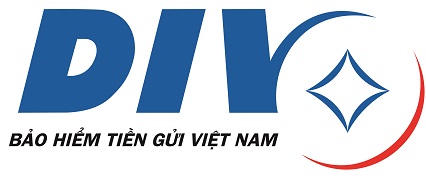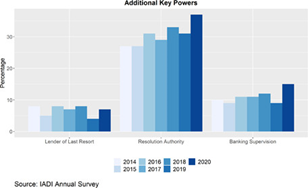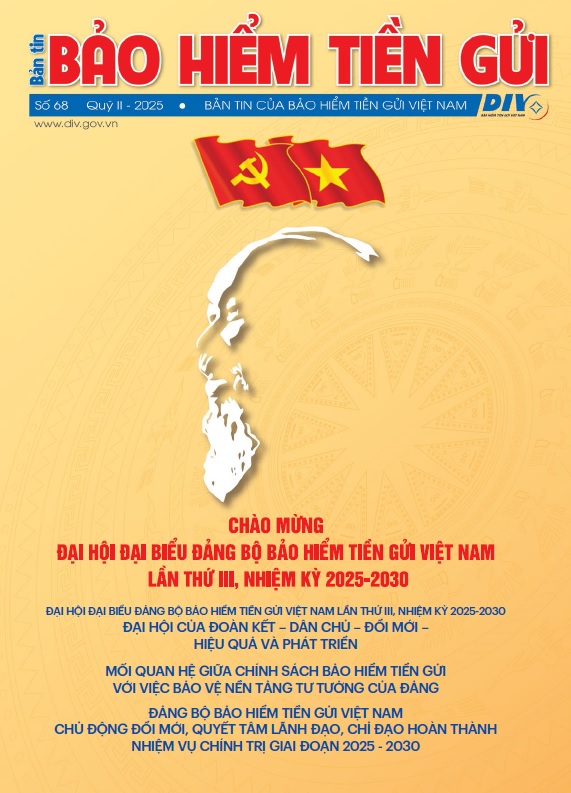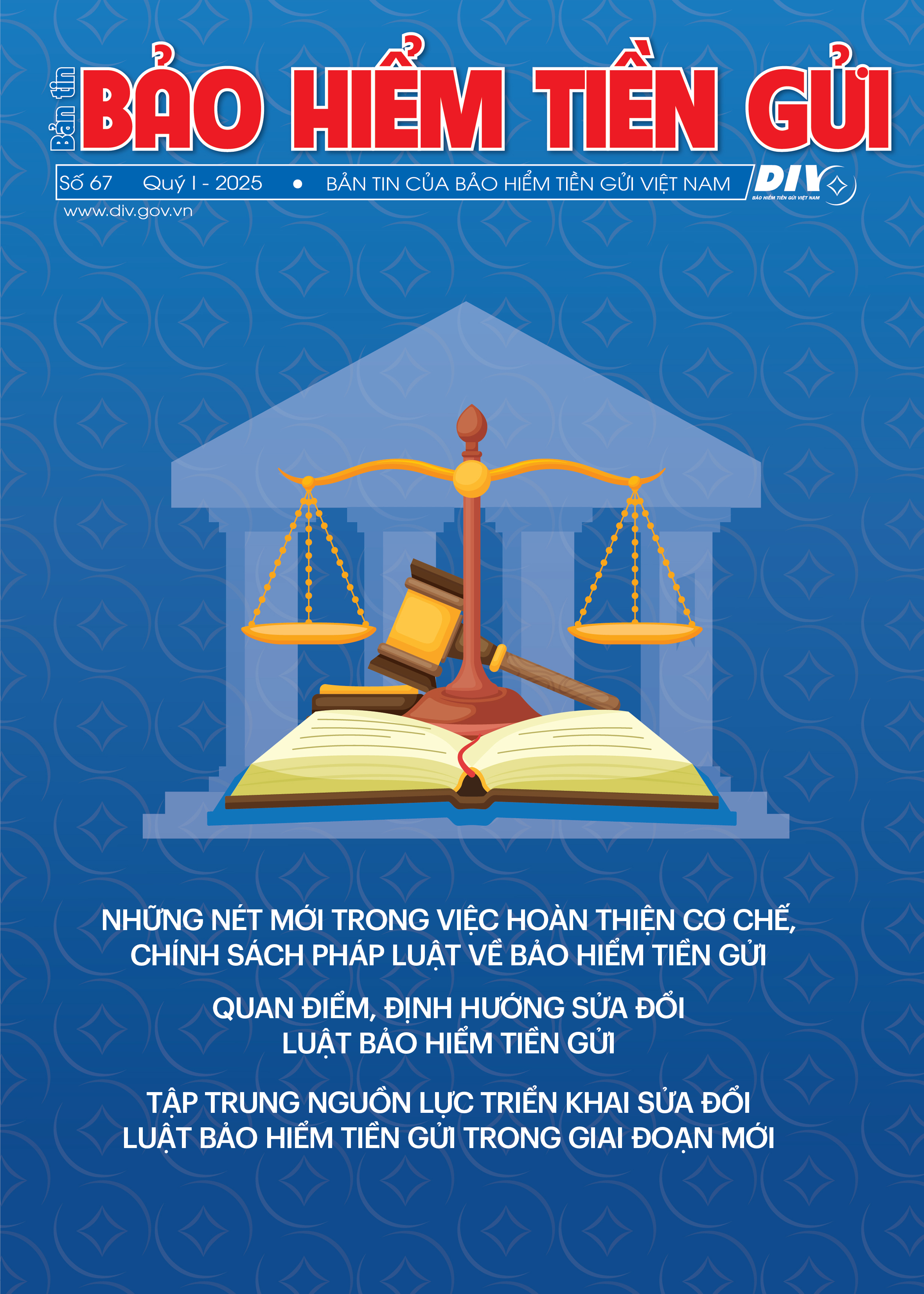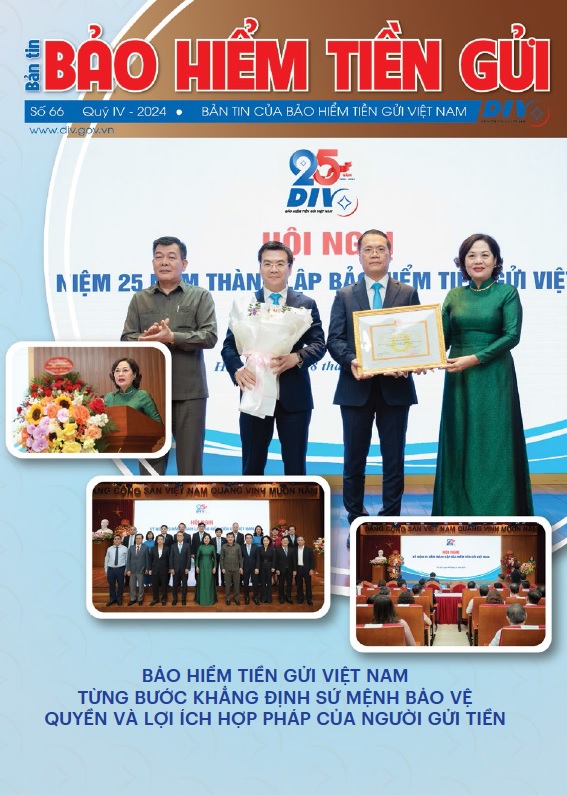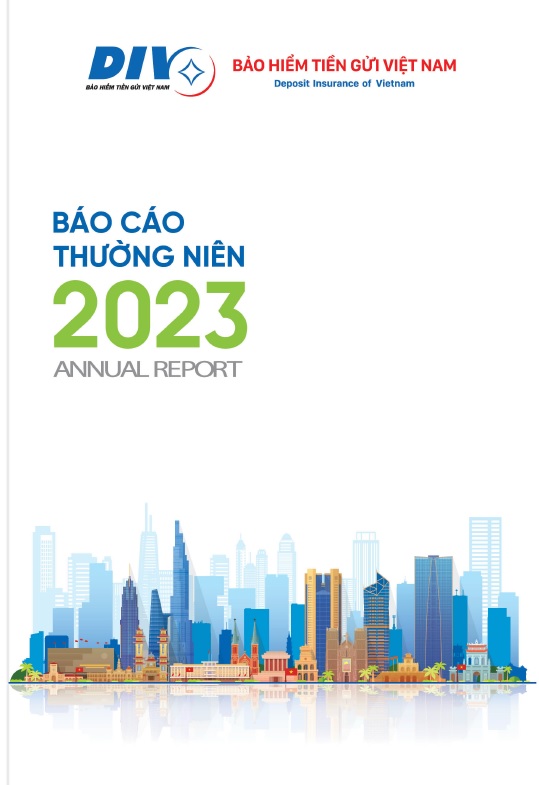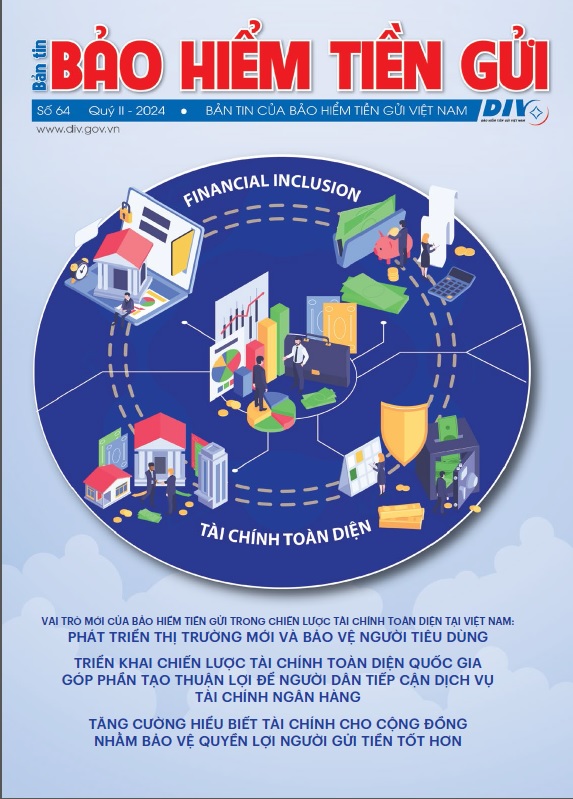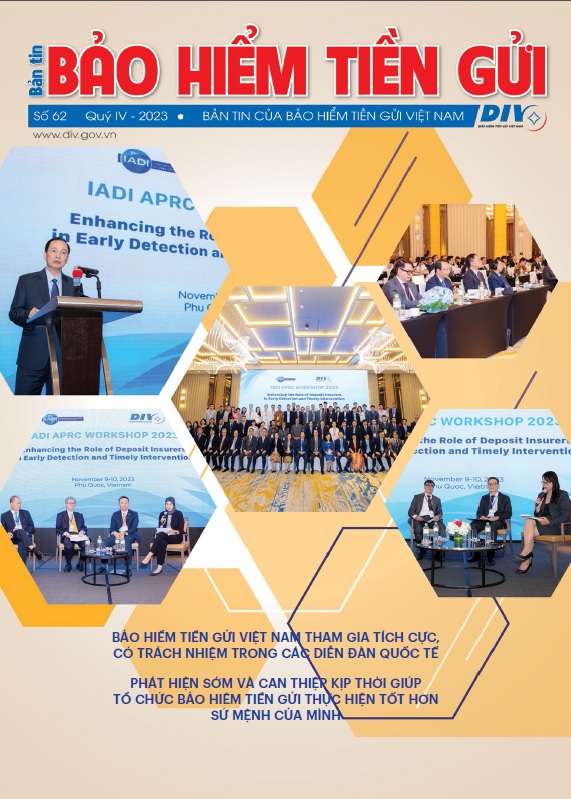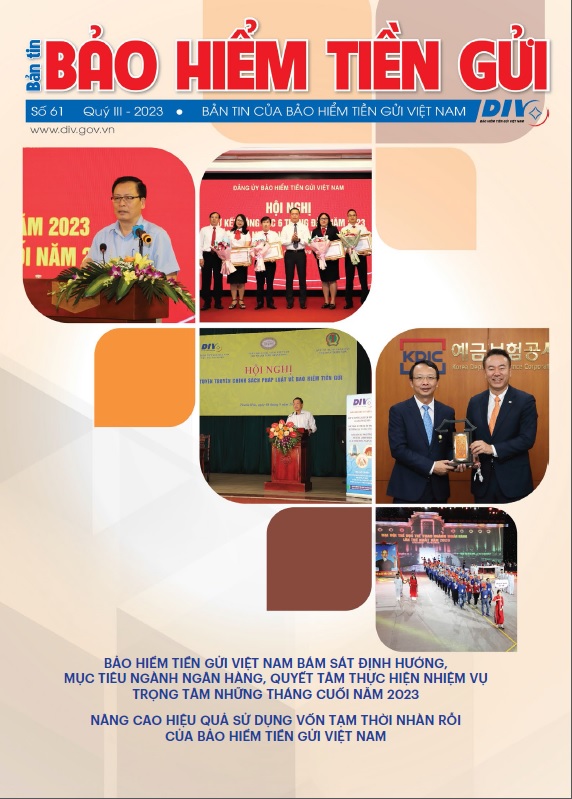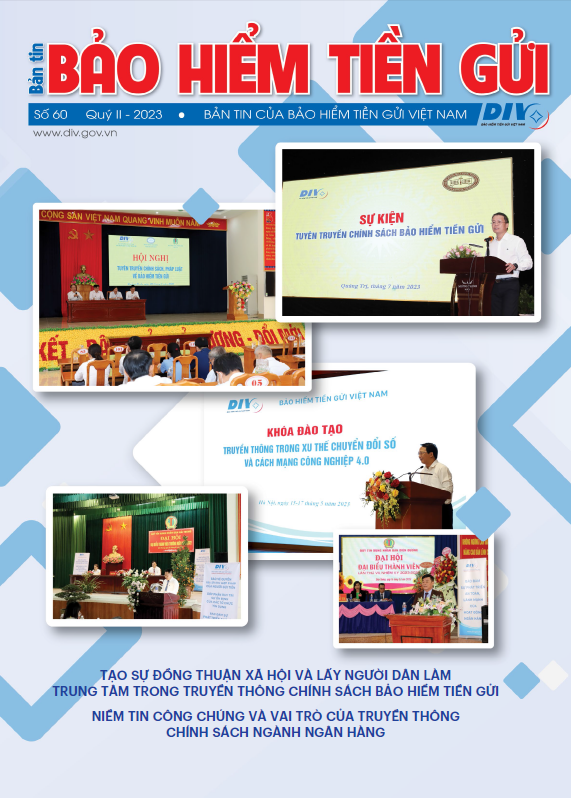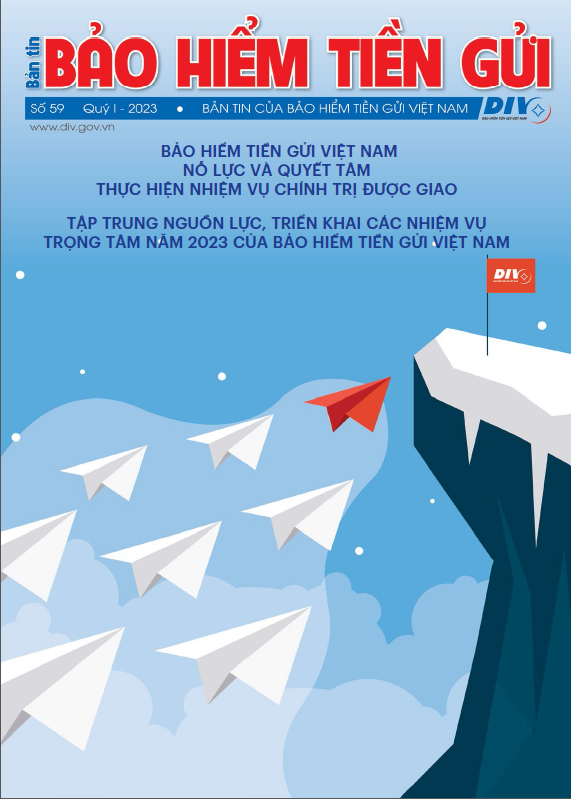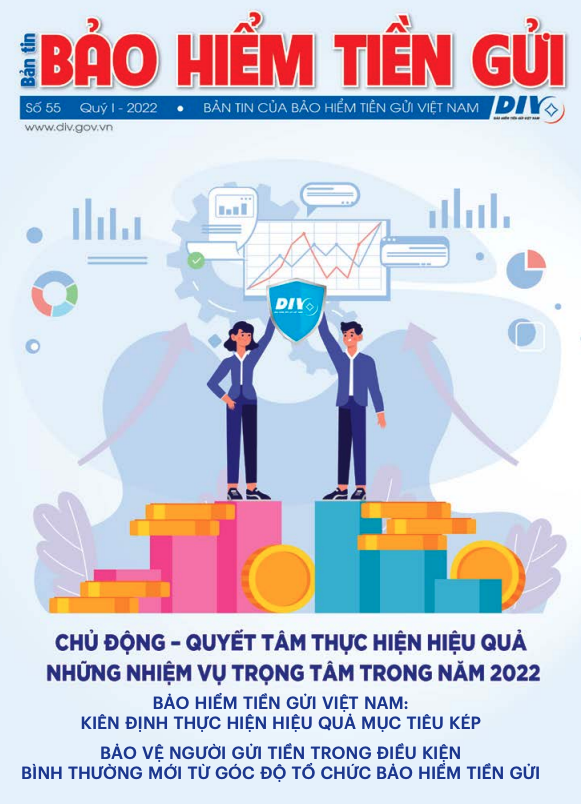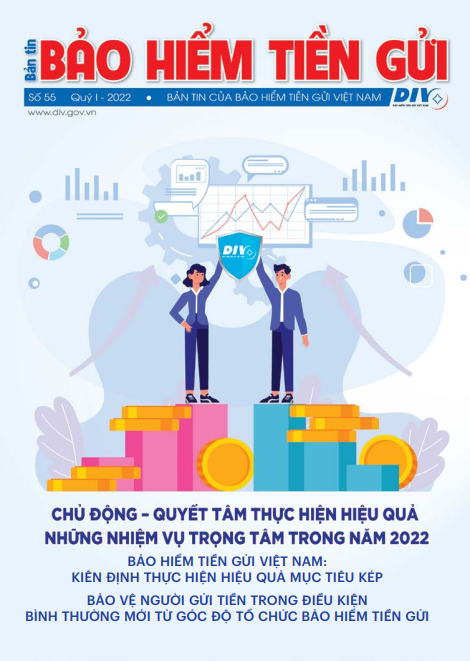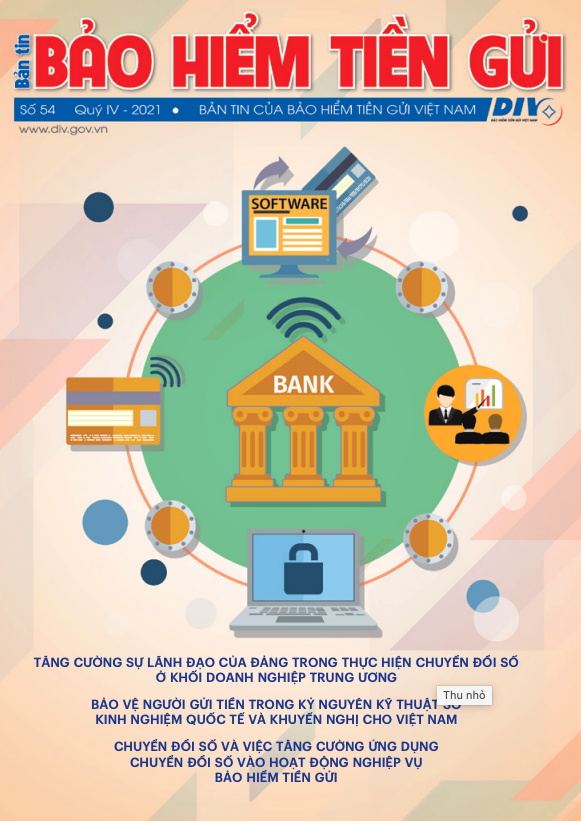Support "resuscitation" for credit institutions have trouble
According to a survey conducted by the International Association of Deposit Insurers (IADI) in 2022, about 23% of deposit insurance organizations in the world are operating with a pay-box model, 42% are operating with a pay-box plus model, 28% are operating with a risk minimizer or loss minimiser model, 7% are operating with other models. This result also corresponds to IADI's previous annual surveys, thereby improving the effectiveness of depositor protection and preserving the safety of the financial and banking system.
In Vietnam, Deposit Insurance of Vietnam (DIV) was established on November 9, 1999 and officially came into operation on July 7, 2000 in the context of the economic crisis spreading in the world and posing strong impact locally. Some people's credit funds (PCFs) have problems and are at risk of closing or bankruptcy, causing great losses to depositors. At that time, the fact that DIV reimbursed when credit institutions went bankrupt reduced the risk of loss for depositors, and was also a "spiritual medicine" to regain public trust; contributing to avoiding chain impacts affecting the banking system as well as ensuring social order and security in localities. After 24 years of operation, DIV has reimbursed depositors at 39 insured institutions, ensuring the rights of small and vulnerable depositors.
However, the duty of DIV is more than that. The Law on deposit insurance 2012 and the Law on credit institutions 2017 stipulate that the deposit insurance organization participates in special control according to the regulations of the State Bank of Vietnam (SBV) to make special loans to specially controlled credit institutions, participate in developing a bankruptcy plan for specially controlled credit institutions, participate in assessing the feasibility of a plan to restructure the PCFs... These are tasks of an "emergency resuscitation", when the deposit insurance organization uses its resources to support credit institutions that have problems maintaining operations, resolving internal problems and restoring to normal status. If a specially controlled credit institution can develop a feasible recovery plan, approved by competent authorities, and supported in many aspects by DIV and relevant agencies and organizations, that plan is likely to be realized, making credit institutions no longer face the risk of failure. Thus, depositors are still guaranteed, deposit insurance organizations do not have to use the operational reserve fund to make payments, and other credit institutions also avoid chain impacts. This is an "end" that benefits all parties and is also the goal that the banking industry management agency is aiming for.
Recently, the Governor of the SBV requested DIV to develop a mechanism to appoint personnel to participate in the management and operation of specially controlled PCFs. DIV has issued temporary regulations on the appointment of personnel to hold the positions of Chairman of the Board of directors and Director of the PCFs under special control, clearly stating the order, procedures, standards and regimes for the nomination of officials thatperform this special task. According to regulations, officials screened and nominated by DIV need to meet the requirements of standards, experience, expertise, professionalism..., thereby firmly resolving the internal problems of troubled credit institutions and maintaining depositors' trust. With personnel from the deposit insurance organization able to be mobilized, the banking industry management agency will have an effective tool to directly correct the operations of specially controlled PCFs.
Besides, DIV also uses policy communication as an effective tool to support the protection of credit institutions and depositors in general. Communicating deposit insurance policies not only helps increase public awareness, but also help insured institutions to be deeply aware of the compliance with legal regulations and enhance market discipline.
In fact, with the participation of the DIV and relevant authorities, a number of credit institutions have been neatly resolved and their operations have been restored. For example, the case of Bao Loc PCFs faced a wave of mass withdrawals in April 2023 because of a false rumor related to the fund's leadership, due to concerns that the fund's operations were unsafe and could fall into a state of insolvency. People came to withdraw money continuously for many days. The State Bank of Lam Dong province branch, DIV and local authorities promptly reassured depositors, affirming that the fund's safety indicators remain completely stable, and related individuals do not flee as rumored. In addition, DIV promoted communication to help depositors believe in the protection of banking policies and deposit insurance policies. After a period of time, people came to deposit money again, and the PCFs stood firm despite difficulty.
Closely monitor the "health" of the banking system
Since the world financial crisis in 2008, a lot of countries around the world, including Vietnam, have paid deeper attention to establishing a national financial safety network to ensure the safety of finance – banking organizations, as well as the stability of the entire financial system in general. According to international practice, the financial safety net usually includes the Ministry of Finance, the Central Bank, the Financial Supervisory Authority, the Deposit Insurance Organization and a number of other agencies.
In fact, to carry out the task of protecting depositors and the banking system in general, DIV has carried out regular tasks to closely monitor the situation and developments of insured organizations. Specifically, DIV currently remotely supervises 1,280 insured organizations, including 96 banks and foreign bank branches, 1,179 PCFs, 1 cooperative bank and 4 microfinance institutions. DIV is applying the most advanced supervision standards according to international practices and the guidance of the IADI. At the same time, DIV is strengthening supervision, aiming to meet the transition requirements from compliance supervision to risk supervision and early warning.
Supervising data is not only used for analysis and evaluation but also as input information when DIV conducts planned on-site examination. Specifically, DIV checks the current status of legal documents on DIV; check the displaying of certificates of insured organization; check the compliance with the information and reporting regime; check the calculation and payment of deposit insurance premium. In addition, conduct in-depth supervision of insured deposits for PCFs ranked in groups 4 and 5 according to the results of classification of supervision activities. DIV also carried out examination under the direction of the Governor of the SBV, specifically comparing deposits and loans of credit institutions.
Closely monitoring the operating situation and early detecting potential risks of insured organizations helped DIV have both a comprehensive and detailed view of these organizations. Thereby, DIV warns of violations and risks so that insured organizations can promptly correct them, and at the same time report to the SBV for banking industry management agencies to grasp and intervene when necessary. As a member of the national financial safety network, the deposit insurance organization has contributed to controlling issues that may affect the safety and health of the banking system.
Improve the readiness and ability to quickly respond to the deposit insurance organization
From the achieved results, it can be seen that the deposit insurance organization has made remarkable contributions to the stability of the banking system. To further promote the effectiveness of deposit insurance policies as well as improve the operational efficiency of deposit insurance organizations, it is necessary to constantly improve readiness and ability to react both in normal conditions and when problems arise in the future. Specifically:
Firstly, perfect the apparatus and improve the quality of human resources of DIV through a comprehensive, far-sighted human resource development strategy, which takes into account unexpected factors that require deep participation of the deposit insurance organization.
Secondly, develop DIV's financial resources through flexible capital investment mechanisms, with a balance between profitability rate, ability to ensure liquidity and ability to preserve capital. In addition to available capital and accumulated capital, the deposit insurance organization needs to be able to be quickly funded from effective funding mechanisms, thereby promptly mobilizing financial resources in sudden and emergency situations.
Thirdly, the deposit insurance organization needs to participate more deeply in the process of examination and supervision of credit institutions, especially safety supervision, through which there is in-depth analysis, assessment, and predictive ability for credit institutions and the whole system in general.
Fourthly, the deposit insurance organization and agencies in the national financial safety network need to periodically organize response exercises through realistic scenarios. The exercise can take the form of tabletop exercises and field exercises to ensure the ability to respond quickly and with the coordination of many stakeholders smoothly and unify.
Fifthly, communication of deposit insurance policies associated with raising awareness about community finance needs to be further promoted. Studies by the IADI as well as many deposit insurance organizations around the world have shown that the higher the public awareness of deposit insurance and banking finance, the less the financial system will face risks such as mass withdrawals. Besides, depositors with their knowledge and understanding will also be an important part in building market discipline and keeping banking operations clean and healthy.
Communication Department
